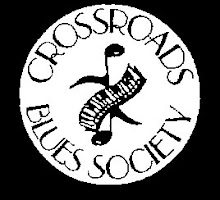 Man Child
Man ChildMarquise Knox
Analog Productions Originals (APO) Records
www.aporecords.com
11 tracks
February 8, 1991. The day Fito Laparra turned 45 years old. James Dean would have been 60 that day had he lived. William Tecumseh Sherman, the famous Union General who performed a lot of harsh urban renewal in his trek across the Southland, would have been 171 years old on that day. And the Man Child was born on that day, too.
The Man Child is now an 18 year old musician from St. Louis who has been playing clubs there for several years. His name is Marquise Knox. Remember that name because there will be a test at the end of this review.
I heard this kid…well, now man…at Mississippi Valley in July. I did not believe my ears. I thought that he sounded like a quite mature adult. The vocals were strong and sure, deep and dark. The guitar playing was precise yet flowing; the sound was measured and technically quite clean and strong. He is not one of these guys who tries to show you in 16 bars all the notes and chords he learned to play. When I got up close to the stage I finally believed the program that this young man is far advanced for his age. Another blues wunderkind! And then when I was asked to review his CD I was already more than intrigued.
Eleven tracks. Only two covers. Songs written in the studio while they recorded in that studio, and other songs that Marquise had “felt” but had not written down. And they are pretty good as songs go, and the delivery is even better. The CD opens with “Love Makin’ Machine”; I was sitting there listening to a then-17 year old explain how he’s young but he knows how to satisfy women and somehow I believed it. He sings “Juke Joint Blues” and while he never really saw a juke joint he is able to feel the history and passion and bring them out to song. And again, you know he’s a kid but he performs like a much wiser adult. The vocals at times have a little edge to them, perhaps from being in the studio for too long (three days) during that ice storm in late 2007, but he pulls it off, including the song he penned commemorating the “Ice Storm”. He does mentor Big George Brock’s song “Problem” justice with good vocals and strong harp work and on Willie Dixon’s “You Need Love” the rocking beat and bass vocals get a nice cover.
He began his self-tutelage listening to “Lightnin’” Hopkins, moved to Muddy Waters, switched to Albert King and then listened to John Lee Hooker. BB King and Howlin’ Wolf and everyone else also got his attention and melded into his mind and soul. He credits Hopkins and Hooker as his biggest influences, but BB, Albert and Muddy are also mentioned in the same breath. St. Louis legend Henry Townsend also imparted is wisdom to the boy and apparently he listened. Michael Burks has featured Marquise in his shows and Burks is featured on the CD, providing his guitar magic to supplement the Man Child. Wayne Sharps’ B3 and keys are nice, too, as are the rhythm section of Don Garret on bass and Chuck “Peppercorn” Louden on drums.
Kids like this seem to me like they grow up too fast. They see things and experience things that young kids should not comprehend and yet they do. And yet when you talk to them they are wonderful young people who are excited about what they do. No matter what the case, you need to get out and see the Man Child. He’s a big young guy with a big voice, big guitar sound and a helluva talent! And get this CD, too! Okay, I promised you a test at the end. Here it is. Listen to this CD and then write an essay in 500 words or less and tell me why you think this kid is the real thing!






